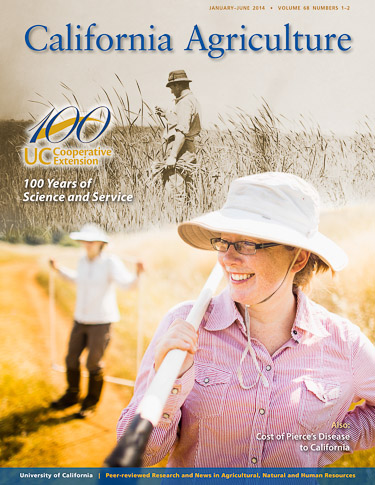All Issues

This year marks the 100th anniversary of Cooperative Extension (CE), a national system linking land-grant universities with the communities they serve. In California, UC Cooperative Extension (UCCE) advisors provide practical, research-based solutions for problems from farm yields to community health. This issue includes a history of the federal legislation that created CE and UCCE’s milestones over the last century (page 8), as well as current contributions that highlight its continued relevance (page 17). This then-and-now cover image shows UCCE wheat monitoring in Yolo County in 1930 (top) and grassland fieldwork today at Sierra Foothill Research and Extension Center (bottom). Top photo courtesy of Yolo County Cooperative Extensive archives; bottom photo by Elena Zhukova.
Volume 68, Number 1





